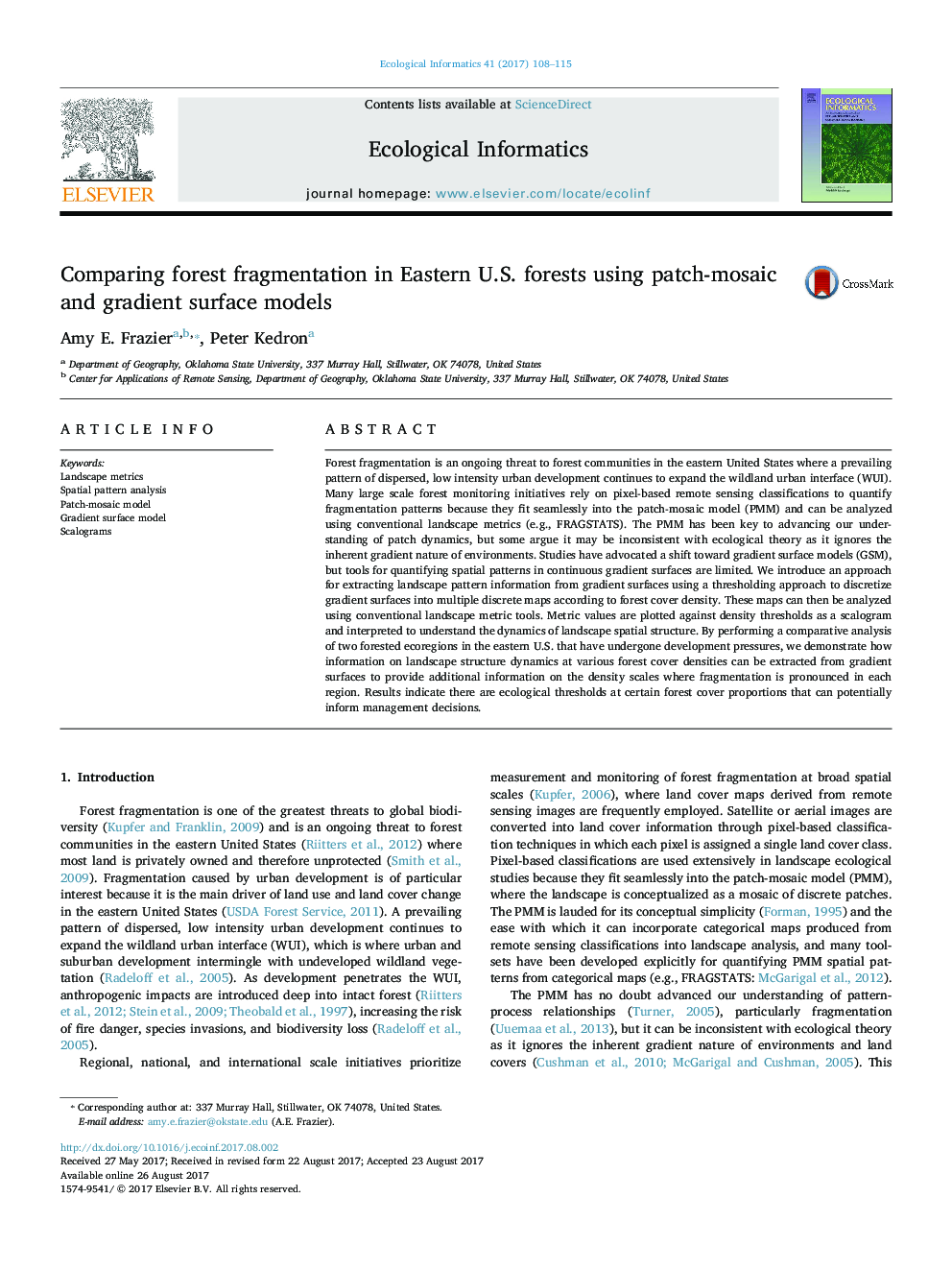| کد مقاله | کد نشریه | سال انتشار | مقاله انگلیسی | نسخه تمام متن |
|---|---|---|---|---|
| 5741916 | 1617193 | 2017 | 8 صفحه PDF | دانلود رایگان |
- Single-value metrics from patch-based data do not capture landscape dynamics.
- Thresholding gradients produces binary maps to analyze with landscape metrics.
- Scalograms of density thresholds indicate nonlinear landscape structure dynamics.
- Scalograms generated from gradients permit identification of ecological thresholds.
- Density scalograms show consistent and/or robust scaling relationships are possible.
Forest fragmentation is an ongoing threat to forest communities in the eastern United States where a prevailing pattern of dispersed, low intensity urban development continues to expand the wildland urban interface (WUI). Many large scale forest monitoring initiatives rely on pixel-based remote sensing classifications to quantify fragmentation patterns because they fit seamlessly into the patch-mosaic model (PMM) and can be analyzed using conventional landscape metrics (e.g., FRAGSTATS). The PMM has been key to advancing our understanding of patch dynamics, but some argue it may be inconsistent with ecological theory as it ignores the inherent gradient nature of environments. Studies have advocated a shift toward gradient surface models (GSM), but tools for quantifying spatial patterns in continuous gradient surfaces are limited. We introduce an approach for extracting landscape pattern information from gradient surfaces using a thresholding approach to discretize gradient surfaces into multiple discrete maps according to forest cover density. These maps can then be analyzed using conventional landscape metric tools. Metric values are plotted against density thresholds as a scalogram and interpreted to understand the dynamics of landscape spatial structure. By performing a comparative analysis of two forested ecoregions in the eastern U.S. that have undergone development pressures, we demonstrate how information on landscape structure dynamics at various forest cover densities can be extracted from gradient surfaces to provide additional information on the density scales where fragmentation is pronounced in each region. Results indicate there are ecological thresholds at certain forest cover proportions that can potentially inform management decisions.
Journal: Ecological Informatics - Volume 41, September 2017, Pages 108-115
